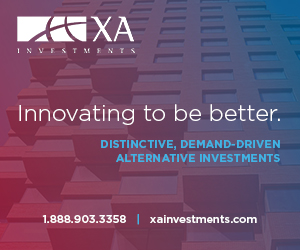Traffic Down At Grocery-Anchored Centers As Inflation Changes Shopping Patterns
October 5, 2022 | Olivia Lueckemeyer | Bisnow
“If you have the right grocer anchoring your center, there’s a certain expectation of, how bad can it really get, because people come here on a regular basis,” he said. “If anything, grocery strength has been reinforced in the last few years, so those centers are going to be even more in demand.”
Long considered the gold standard of retail, visits to grocery-anchored centers in cities like Dallas have slowed as the rising cost of goods prompts consumers to change their habits.
Foot traffic was down across the city’s grocery-anchored centers during the three months leading up to September, according to data from Placer.ai. That supports similar national Placer.ai data from May, which also showed visits to superstores like Costco and Sam’s Club were outpacing trips to traditional grocery stores as consumers attempted to save on gas and buy in bulk during a period of greater financial uncertainty.
Data analysts say a dip in grocery visits is to be expected after the record-setting activity seen in 2021, but economic turmoil is also at play.
“Inflation definitely has an impact, and it changes some of the patterns of where we shop,” Placer.ai Vice President of Marketing Ethan Chernofsky said. “Gas prices are really significant because they say to the consumer, ‘Go out less.’”
DFW’s grocery industry has expanded rapidly over the past two years as a boom in population brought a flood of new stores to the market. Perhaps the most high-profile addition was H-E-B, which opened its first DFW location in Frisco in late September and has five more stores in the works.
“People continue to move here, demographics continue to be very diverse, and grocery stores have taken note,” Advisors Commercial Real Estate partner Phillip Hooks Jr. said.
Grocery stores tend to be successful on their own, but they also boost the performance of co-tenants, Weitzman Chief Marketing Officer Leisa Barger said. Grocery-anchored centers comprise close to 74M SF in Dallas, of which 95% is leased, outperforming centers without a grocery anchor, Barger said.
“Grocers are critical to the success of so many of these centers,” she said. “They are some of the highest grossing centers in terms of overall profitability, overall productivity.”
Grocery-anchored centers across the board have seen traffic dip over the past three months, but that doesn’t mean grocers are losing money, Chernofsky said.
At the end of August, total U.S. grocery sales totaled about $71.13B, compared to $66.06B one year prior and $58.54B in 2019, according to the U.S. Census Bureau’s Advance Monthly Retail Trade Report.
“It’s not necessarily that grocers are losing out,” he said. “It’s that they’re making more money per trip even if people are making less trips.”
When money is tight, certain types of grocers tend to outperform others. People are more likely to patronize stores that are not only closer to home but also meet all of their needs in one visit, which puts all-in-one neighborhood grocers, like Kroger, at an advantage.
“Kroger, when you really dive into their strategy, is all about being near their audience,” Chernofsky said. “They benefit from this desire to not go as far; proximity is such an important factor.”
Placer.ai data suggests Kroger has been less impacted by a downturn in the economy than other grocers. In August, visits to Kroger-anchored centers were down by about 9% compared to the same month in 2019, whereas non-Kroger anchored centers were down 13.6%. That trend has been consistent each month dating back to September 2021, per the data.
More grocery stores in DFW translates to increased competition among operators. Brands like Kroger and H-E-B have the benefit of being closer to consumers, but Barger said they have also been quicker to adopt technologies centered around enhancing the user experience.
“They’ve got futuristic-oriented DNA,” she said. “It’s totally inherent in their company and their thinking.”
The pandemic changed the way people shop, which likely explains why foot traffic is still not back to pre-pandemic levels, Barger said. Widespread shutdown orders accelerated the rise of curbside pickup and grocery delivery, but even as businesses reopened, many shoppers continued to shop from home.
Innovative grocers, like Kroger and H-E-B, took note of this change and began leaning into omnichannel personalization to drive growth and profitability.
“We saw a tectonic shift,” Barger said. “These grocers were really going to spend the time, money and energy on elevating the omnichannel because they knew that at some point, it would become their Amazon. They know that there are enormous gains to be made.”
Digital technology has yet to flip the grocery model on its head, but it has grown to a point where it is an important part of a store’s bottom line, Barger said. More than 68 million households placed at least one online grocery order in August, up 23% compared with 2020 and more than double the level seen three years ago.
“There will continue to be head-to-head competition on who can provide the best in-store experience,” she said. “But then on the other side, we have to keep evolving. The e-commerce, omnichannel experience has to be at the highest level of innovation possible or they will start to lose profitability.”
Firms like Weitzman are always thinking about how evolving trends in retail might impact tenants, which is why company leaders made the choice years ago to incorporate more service-oriented businesses, like hair salons and dry cleaners, into shopping centers, Barger said.
That forward-looking decision should protect co-tenants in grocery-anchored centers from taking a major hit if the majority of shopping eventually shifts online.
“Customers look at these centers as a necessity,” she said. “I have to go there, rather than I want to go there.”
The Congressional Budget Office predicts that inflation will not settle at the target rate of 2% until 2024. But because food is an indispensable human need, grocery stores will nevertheless continue to buoy the performance of retail centers, Chernofsky said.
“If you have the right grocer anchoring your center, there’s a certain expectation of, how bad can it really get, because people come here on a regular basis,” he said. “If anything, grocery strength has been reinforced in the last few years, so those centers are going to be even more in demand.”











